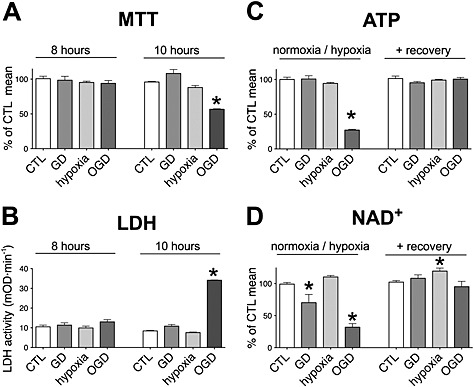Figure 1.

OGD induces reversible energy depletion. A, B: H9c2 cells were exposed to glucose deprivation (GD), hypoxia or OGD or maintained in glucose‐containing culture medium at normoxia (CTL) for 8 or 10 h. The cellular viability was determined by the MTT assay (A), and LDH release (B) was measured in the supernatant following a 16‐h‐long recovery period. 8‐h‐long OGD did not affect the cellular viability, while 10‐h‐long exposure induced significant decrease in viability. C, D: H9c2 cells were exposed to GD, hypoxia or OGD for 8 h followed by a 16‐h‐long recovery period. The cellular ATP and NAD+ contents were measured at the end of the 8‐h‐long hypoxic period and following the recovery. OGD induces significant decrease in cellular ATP and NAD+ contents that are completely restored during the recovery period. n = 4, *P < 0.05 compared with CTL.
